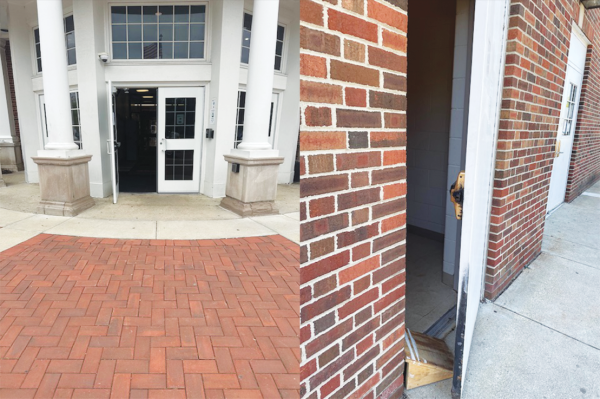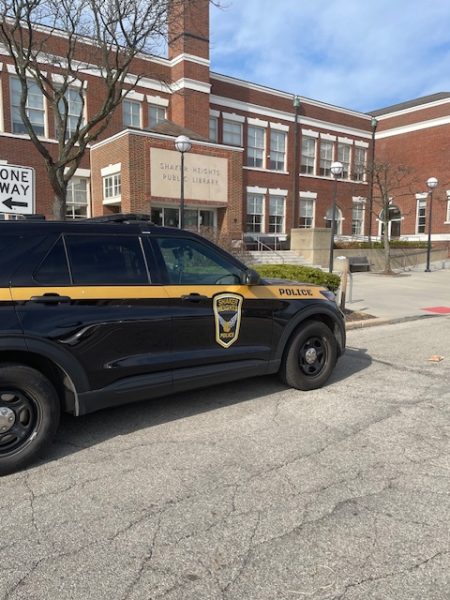Adults Need the Lesson in Twitter Etiquette
At 8:56 a.m. on Friday, April 13, the New York Times released a news alert: “President Trump called James Comey an ‘untruthful slime ball’ on Twitter. The former FBI director’s new memoir takes aim at the president.” Simultaneously, Shaker Heights High School teachers began a school-wide lesson about student behavior on social media.
The Common Sense Media lessons, prepared by Principal Jonathan Kuehnle’s Student Leadership Team, first asked students to evaluate statements about employer or college access to personal social media accounts. Then, students assessed two invented students’ social media pages and considered which student would be admitted or hired.
It is crucial that young people learn proper online conduct — especially with increasing access to technology. Every year, more ways are devised to teach a 5 year old not to click suspicious links, a 10 year old not to cyberbully or an 18 year old not to jeopardize their future on Twitter.
Let the ironically-timed New York Times notification remind us which demographic is truly a danger on the internet.
Twitter exists in a gray area wherein seemingly anything goes: Presidents can pick fights with world leaders, news organizations can share breaking news and our own Shaker administrators can entangle themselves in PR nightmares.
I have no concerns about official Twitter business — the platform is convenient and accessible. However, a closer look at Shaker administrators’ Twitter accounts reveals nonexistent universal guidelines for professional conduct. It is fair to say that any Twitter user whose username directly references their profession — ie, @ShakerPrincipal — is operating a professional account.
Kuehnle’s Twitter account lacks consistent professionalism and, by making himself too accessible to students, he threatens to undermine his own authority. To his credit, Kuehnle’s timeline mostly comprises retweets, congratulations and excessive exclamation points. On the rare occasion that he pens his own tweet, however, he chooses tones, language and sometimes even content that are bound to hurt more than help his communication.
On March 1, the night before Shaker was expecting inclement weather, Kuehnle tweeted, “SNOW DAY TOMORROW? (Made you look!) Today represents the start of Women’s History Month. It’s also Ohio’s 215th birthday!”
Twitter is one of the easiest means of communicating a snow day, and students look to this platform for legitimate information from their school’s and administrators’ Twitter accounts. Tweets this immature, however, initiate a boy-who-cried-wolf communication mess. No school employee, let alone a principal, should publish the phrase “snow day tomorrow” as a rhetorical question.
Twitter’s accessibility is a two-way street, and Kuehnle has chosen to not only deliver information, but also to respond directly and, at times, immaturely to students. On Jan. 29 at 8:23 a.m., junior Katrina Cassell tweeted to the principal her opinion of the newly-implemented ID policy. She called it “idiotic.”
Five minutes later, Kuehnle responded via Twitter, “Sounds like a frustrating start to a Monday. Get here a few minutes earlier and remember to wear your ID, and things should go smoothly. Don’t blame the system — adjust to it.” In his next tweet, Kuehnle asked, “Are you allowed to be on your phone during [your class]? Asking for a friend.” He named Cassell’s first-period class in the tweet, thus revealing part of her academic record and placing her teacher in an awkward position.
To Kuehnle, I would recommend taking Twitter more seriously. Social media should always reflect the user’s personality and voice, of course, but the voice in this case should be professional, serious and sincere. Never respond to students.
Superintendent Gregory C. Hutchings, Jr., doesn’t tend to respond to the public on Twitter. He does, however, walk the thin line between a personal and a professional Twitter account. I can’t fault him for posting pictures of his family or fraternity anniversaries, because it’s not dissimilar to displaying family photos on one’s desk at work — personal, but not unprofessional.
But Twitter accounts are far more visible than desks, and among students, personal photos of the boss invite snickering responses. This publication has featured Hutchings’ tweeted pictures, especially of his bow ties, in the past.
Assistant Superintendent of Curriculum and Instruction Terri L. Breeden tweets almost as frequently and glowingly about the Washington Redskins as she does about Shaker’s educational events. Her blurred professional/personal account is not dissimilar to Hutchings’.
To Breeden and Hutchings, I would recommend creating unique work and personal Twitter accounts, respectively public and private. Their pictures of kindergarten visits, educational conferences and other professional events would be more relevant if not lost among inspirational quotes and non-Shaker sports news on Breeden’s timeline or family photos and bowtie purchases on Hutchings’.
Professional use of social media is not uncharted territory. The Shaker Staff Guidelines for Social Media, Blogs, and Online Practices were established almost 10 years ago, but have not been updated for five. Now that our president is setting horrendous norms for professional Twitter accounts, Shaker should consider redefining how professionals should conduct themselves on Twitter.
The existing guidelines warn against sharing compromising photos and engaging with students, but they don’t address the increasing use of public, professional accounts.
Shaker employees should use uniform usernames, limit personal photos and, if the account does not reflect their professional identity, make it private.
If young people are expected to behave maturely on public social media accounts, educators should be setting the proper example.
A version of this article appears in print on page 38-39 of Volume 88, Issue III, published May 18, 2018.








